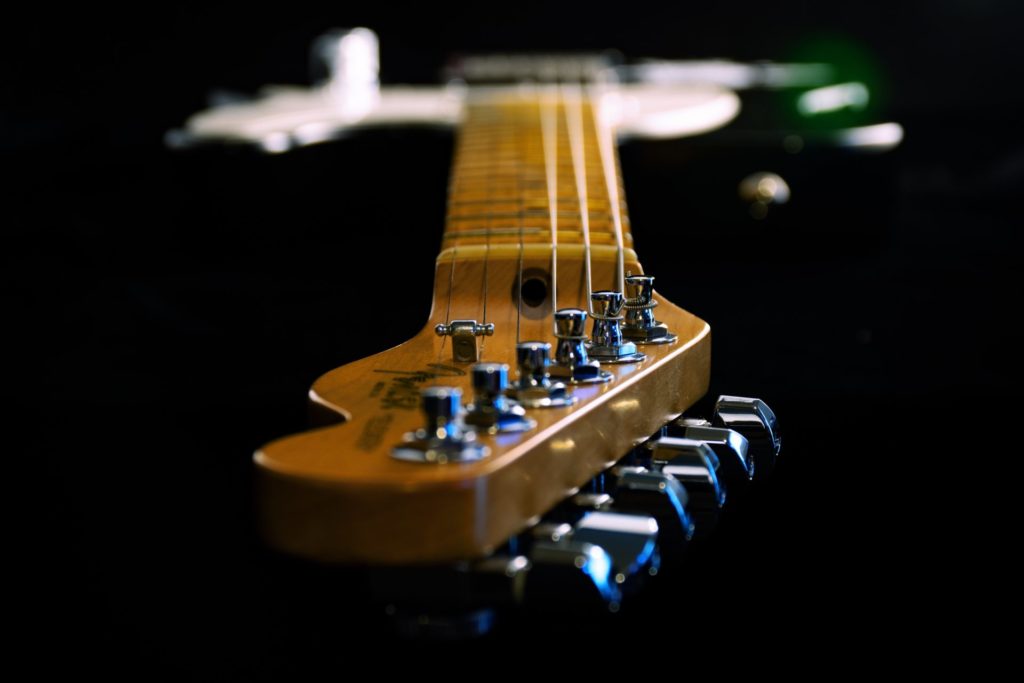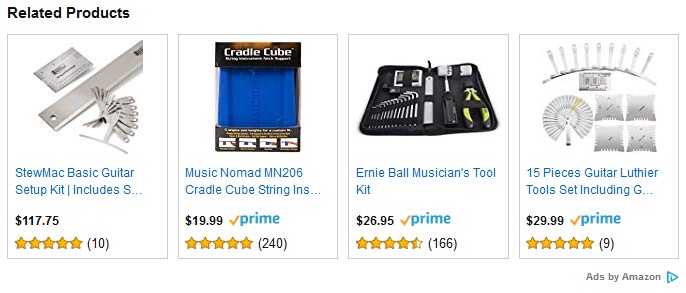Setups and Adjustments
The difference between a great playing guitar and a lousy one… is quite often as simple as a setup.
Have you ever had a great setup done on your guitar? It’s amazing what a few adjustments can net in terms of playability.
What is a setup? Just like you can hot-rod your car or truck, you can make adjustments to your guitar and fine-tune it to play and perform its best. Some people are so surprised that after a few tweaks to that hand-cramping pig of a guitar, it can actually be turned into a sweet, buttery-smooth, beast. Once it is set up, it changes everything- perhaps it never even had a setup!
Guitars will require adjustments on a regular basis to maintain proper playability and performance. A typical guitar setup is a complete adjustment and calibration of the entire instrument to ensure that it is as playable and as responsive as possible.
There are many factors to consider when doing a custom setup.
A Typical Setup
- Restring
- Clean and hydrate fingerboard
- Tighten, adjust and lubricate hardware
- Adjust truss rod
- Adjust tremolo-bridge setting
- Adjust string height at bridge and nut
- Adjust intonation
- Clean and lubricate electronics
- Adjust pickup balance
- Tune and check playability
Action
Commonly, players request lower action when they bring it down to the shop for the first time. Action, or string height, can be set as low as the fretboard will accommodate, and all fretboards are different! The fretboard radius (curve of the playing surface), condition of neck, fret height consistency, string gauge, tuning, and playing style all have a significant role in determining the best and lowest action for each instrument.
Fretboard Radius
Generally, although not without exceptions, the flatter your fretboards’ radius, the lower you can set the strings to play cleanly with enough clearance for full string bending in all positions. Vintage-styled necks with a rounder playing surface demand higher action to allow full playability across the entire neck.
Condition of Frets
And are your frets “level” enough? Meaning, from one fret to the next, across the length and radius of the fretboard, are they all the same height? If your frets aren’t completely level (and most guitars aren’t 100%), their inconsistencies may become obvious when the action is lowered. Low spots will buzz and/or lose sustain and intonation. You may need a fret level to level out those divots, dents, high/low frets, or subtle warbles down the neck… that is if you expect your guitar to play consistently in all positions. Warped necks are a whole other story, let’s assume it’s not!
String Gauge & Tuning
String gauge, tuning and playing style are important to consider. Someone who plays aggressively may need higher action if they want to avoid excessive fret buzzing. And the lighter the gauge of strings, the less tension there will be, which can make them sloppier (think spaghetti compared to chicken wire). The looser the string (due to string gauge or drop tuning), the wider the strings’ elliptical vibrational pattern is when played. The wider the vibration, the more clearance it requires (in relation to how hard the string is played).
Understanding Fret Buzz
Many electric guitar players will request low action and no buzzing, and often with light strings to boot! The truth is, any electric guitar will buzz to some degree, and if you look for buzzing, you’ll find it! A lot of that normal string buzz doesn’t even come through the amplifier, but some will. The harder you play the string(s), the more the string(s) will vibrate, the more space needed. After a hard pick attack, there’s nowhere for that string to go but to bounce off those frets. This is where that buzzing generally comes from. Steel frets, steel strings = they hit each other! Although it can be minimized through a proper setup and fret levelling, buzzing and electric guitars go together. Most players ignore it or accept and live with it. Others go on to play keyboards 😉
The Factory Setup VS Custom Setup
In many cases, guitars will come “factory setup” with a medium to high playing action. Why in the world would they do that?
They do this for various reasons:
1) Nobody wants to hear a buzzy guitar when they pick it up for the first time.
2) Not everybody likes low action.
3) There is always a ‘settling in’ period with new guitars, being made out of wood, many manufacturers take this into account, which helps avoid any potential problems before they are sold.
4) The instrument will sound better, give off more volume and sustain with higher action (truth… try it).
5) Great playing action is simply a matter of opinion! (which is why most people will bring their guitars into the shop when it’s not performing the way that they want it too).
Tools Needed
There aren’y many tools required to execute a guitar setup. Measuring tools can help throughout the process, as well as other guitar accessories. Here’s the shpping list:
- Fresh guitar strings & a capo
- Truss rod wrench
- Steel ruler that measures in 64ths of an inch
- Automotive feeler gauge set that measures in thousandths of an inch (.001”)
- Multi-head screwdriver / precision screwdriver set
- Your guitar’s saddle height adjustment wrench (if applicable)
- An accurate electronic tuner
- String cutter /side cutters or cutting pliers
These items can be found at your local music and hardware stores or online. You can check out typical costs and other options by clicking the image/link below.
Conclusion
So remember, there are many factors to consider when doing a custom setup, it’s not solely about “feel”. You can learn how to dial in the perfect setup on any guitar, with the right education and information. We’re here to lead to the way with online articles, classes and books. Let us know what you what to learn about in the comment section below.








An excellent article shared by you. I am interested in a guitar repair job. I have already started with my own guitar repairing. From the beginning of my professional life, I found your article very much helpful to me. I agree that cleaning the guitar gears is very important.
[…] isn’t just about preserving its appearance; it’s about safeguarding its sound and longevity. Why is regular maintenance crucial for your parlor guitar’s lifespan?? Neglecting this aspect can lead to irreversible damage that might alter the tone and playability […]